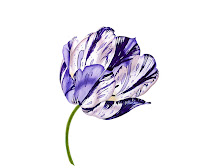
The benefits of maintaining a well-stocked and neatly organized pantry are numerous. A bonus is, you won’t have to make as many trips to the store. If you follow these easy steps that I have outlined in this article for you -- by starting with keeping items inventoried and making a complete list of what you need to purchase -- it will not only save you much aggravation, but will allow you to use the coupons you have clipped and purchase items on-sale and even in bulk, saving you: gas, time and money! As well as, your sanity!
It does not matter how large or small your pantry is, but FUNCTION needs to be your first consideration. Here are a few functional tips for organizing your pantry:
- Just like organizing any room in your home, a pantry should be planned to save time, energy, efficiency; and therefore, money!
- Your pantry should be well-lit so that you can see all areas.
- Make your pantry efficient for you. It should be located centrally in your home. Either in the kitchen or a hall closet that is relatively close to your work area. If needed, it is perfectly fine to create multiple pantry areas. If doing this, just remember to organize each space so that the items needed in the kitchen are in the kitchen ~~ cleaning supplies separate from food ~~ and bedding and bath linens are near your home’s bedrooms and bathrooms, and so on.
- Consider the humidity and temperature of your pantry; you don’t want to store dry food items in a damp place and a pantry that has a relatively cool, constant temperature is ideal.
- If space is limited, buy plastic storage containers that you can stack in a coat closet, on top of closet shelves, and/or even under your bed. In these containers, I would keep items that you access less often in these storage areas. If you buy in bulk to save money and keep the excess inventory in these less easily accessed areas, you can always restock a smaller supply in your most convenient pantry storage area.
- Keeping a "good inventory" of the items you use regularly, will allow you to be able to avoid tempting sale prices on items you don’t use and/or you don't need.
Getting Started ~ Cleaning Out The Pantry
Now that you have planned your pantry for function, it is now time to get started on reorganizing!
Once you have established your pantry area, you’ll want to start by removing everything ~ I know, I know ~ don't freak ~ by removing everything will be able to help you get started and in order.
- Empty your pantry completely ~ moving everything into boxes, tabletops and/or counter tops. Discard or recycle anything that you find is spoiled, expired, stale or otherwise unusable.
- Before setting about to put things in order ~ you are going to have fun by disassembling whatever food cupboards you currently use. Look at everything as you take it out and consider the following: How long has it been since you used that item? For example, Herbs ~ loose a great deal of flavor after 6 months even in a dark, cool space.
While you’re at it check expiration date and throw away accordingly. Remember the rule: When in doubt, Throw it out! - Clean any dust or dirt off of each item as you go.
- If something has lost it's label, but you know for certain what it is, make either a handmade (or digital created) label for easy recognition and mount it to your container.
- The best part about this process ~ even if it is time consuming, is that it only has to be done twice a year. Plan to do it in the Spring and Fall.
- Clean the shelving and walls thoroughly with a solution of warm water and mild soap, drying them with a towel and by letting the shelf surfaces dry thoroughly.
Preparation ~ Pantry Space
Once you have removed everything, cleaned and prepared your pantry space, you are ready to start re-organization. This is the fun part!
Here are my suggested steps for getting your pantry ready for increased efficiency, order and money saving~!
- As you begin to organize your "Well-Stocked Pantry"...look for any available space you can use to store items; the back of a pantry door can be used to store spices and other small items if you hang a rack over the door. You can purchase these racks at either: Bed Bath and Beyond, Home Depot, Lowes, Target and or any other similar retail store.
- If needed, now is the time to repaint your pantry walls and shelves. I believe that white or off-white is generally the best color for a pantry. It shows cleanliness!
- At this point, you can lay down some easily wipe-off surface paper on your shelves. This will protect your shelf surfaces from stains.
- Your next step is organizing your shelves according to the contents that you want to keep in your "Well-Stocked Pantry."
- I suggest getting some of Tupperware's Modular Mate containers. They are great for keeping dry goods such as flour, sugar, pasta, teabags, coffee beans, and cereal. I believe that using rectangular or square containers will take up less space and stack more neatly than round or oval shaped containers.
The Pantry Re-Organizing
Now that you have cleaned out your pantry, you can begin to get things organized by using the following steps:
- Start by sorting pantry items into categories: Examples include: fruits, vegetables, soups, condiments, boxed lunches/dinners, canned meats, sauces, baking goods, and rice/pasta/dry beans. While you're doing this first round of categorizing, be sure to put the items in order by their expiration dates, by putting the soonest expiring being the last item to go back into the pantry (i.e. it will be in front, thereby reducing wastefulness).
- The heaviest of items should go on the lower shelves. Especially if you have a lazy Susan installed. For example, you have a large can of Tomato Sauce, put it on the lowest shelf with the canisters for your baking goods. In the meantime, leave the upper shelves open for those items that you use frequently, and lighter weight items like beans, pasta and/or rice.
- By using canisters you can keep dry goods and baking items such as: flour and sugar, fresh and bug free. You can keep smaller items, such as tea and coffee, dried fruits and bouillon in small baskets and/or plastic bins, which also helps keep them fresh.
- Group items that are alike together: breakfast items, snack items, baking goods, cleaning supplies, dish linens, etc. It is important that if you take a bit of time to consider how things are arranged in the grocery store where you typically shop, you can group your pantry items similarly. Using subgroups will help to keep things more neatly stored and easily accessible. For example, all canned goods go on one shelf, organized into subgroups such as: fruits, vegetables, soups, crackers and cookies, etc.
- Labeling shelves will help you keep your groups in order.
Pantry Inventory List and Restocking
Now that you have cleaned our your "Well~Stocked Pantry," have discarded outdated items, added shelving (if needed), you will want to take inventory. By doing this it will help you to determine what is missing and what needs to be regularly re-supplied.
For your convenience, I have created a starter list of common items you may want to keep in your pantry and add to your own pantry inventory list:
- Canned Items – Soup, Broths, Vegetables, Fruit, Beans, Tomatoes, etc.;
- Jar Foods – Tomato Paste and Sauce, Olives, Pickles, Peanut Butter, Jams and Jellies
- Baking Items – Baking Powder, Baking Soda, Flour, Sugar, Extracts and more!
- Spices – Salt, Pepper, Basil, Italian Season, Tarragon, Paprika, Crushed Red Pepper and more!
- Starches – Pasta, Potatoes, Rice
- Condiments – Soy Sauce, Vinegar, Ketchup, Mustard, Mayonnaise
- Sweeteners – Syrup, Honey, Artificial Sweetener
- Dry Goods – Cereals, Oatmeal, Pancake Mix, Raisins & Dried Fruit, Nuts & Seeds
- Oils - Olive Oil, Canola Oil, Peanut Oil, Vegetable Oil, etc.
Keeping The Pantry Well Organized
Now that you have your pantry cleaned and organized, you will want to follow these few easy tips to keep it that way:
- Don’t buy things that won’t get used; this will save money!
- Do buy only according your tastes, budget and needs.
- Look for coupons (with our coupon bar) and sale items to keep in your pantry
- Use your pantry regularly, checking your inventory to be sure that you are not overstocked.
- If possible, items such as paper towels, paper plates, napkins, etc. that will not expire or become stale, purchase in larger quantities.
The Wrap-Up
If possible, try to buy reserve quantities of the staple items that you use the most. This will avoid "out-of-stock" items. Having an extra jar of mayo or some reserve cans of chicken and/or tuna salad can come in very handy with a surprise visit from a friend. Be sure to add these items to your shopping list when you break into your reserves.
With kids in the house, you might want to consider making a special area and/or basket where you can keep quick snacks and treats handy. This will help keep the kids out the pantry! Homemade trail mix is a great snack and easy to store!
I have found that it is best to try to reorganize your pantry when you are alone, or have a block of time available for you to concentrate and complete the project quickly!
Remember to store cleaning products and chemicals away from your food items!
Keep items that you use the most often in front and readily visible!
Stack cans, jars and other items so that the labels can be easily read.
Always be on the lookout for new organization aids such as: baskets, wire baskets, adjustable racks, stacking containers, and more that will improve your pantry organization.
Make a "guest" or "refreshment" shelf to keep crackers, dips, chips, drink mixes and other items handy so you are ready to have an impromptu party or your children's friends.
Keep paper/pencil and/or a small whiteboard in your pantry. You could also paint a chalkboard on the back of your pantry door. You will be surprised how this will encourage family members to add what they would like to the inventory or what they have noticed is out-of-stock.
If you can’t get everything into the pantry neatly, you might store non-essential items in a more “remote” storage location such as the garage or basement.
Baking Soda
Baking Powder
Corn Starch
Flour
Sugar (Powdered, Granulated and Brown)
Yeast
Stock (Chicken, Beef, Vegetable)
Maple Syrup
Cooking Wine
Milk
Butter
Eggs
Mustard
Lemons (or Lemon Juice)
Mayonnaise
Garlic
Hot Sauce
Onions
Parmesan cheese
Dried Beans
Pastas
Spaghetti Sauce
Canned Soup (Cream of Chicken or Mushroom)
Various Cheeses
Sour Cream
Cream Cheese
Canned or Frozen Vegetables (usually frozen taste better)
Potatoes
Celery
Carrots





















No comments:
Post a Comment
Thank you for your Comment